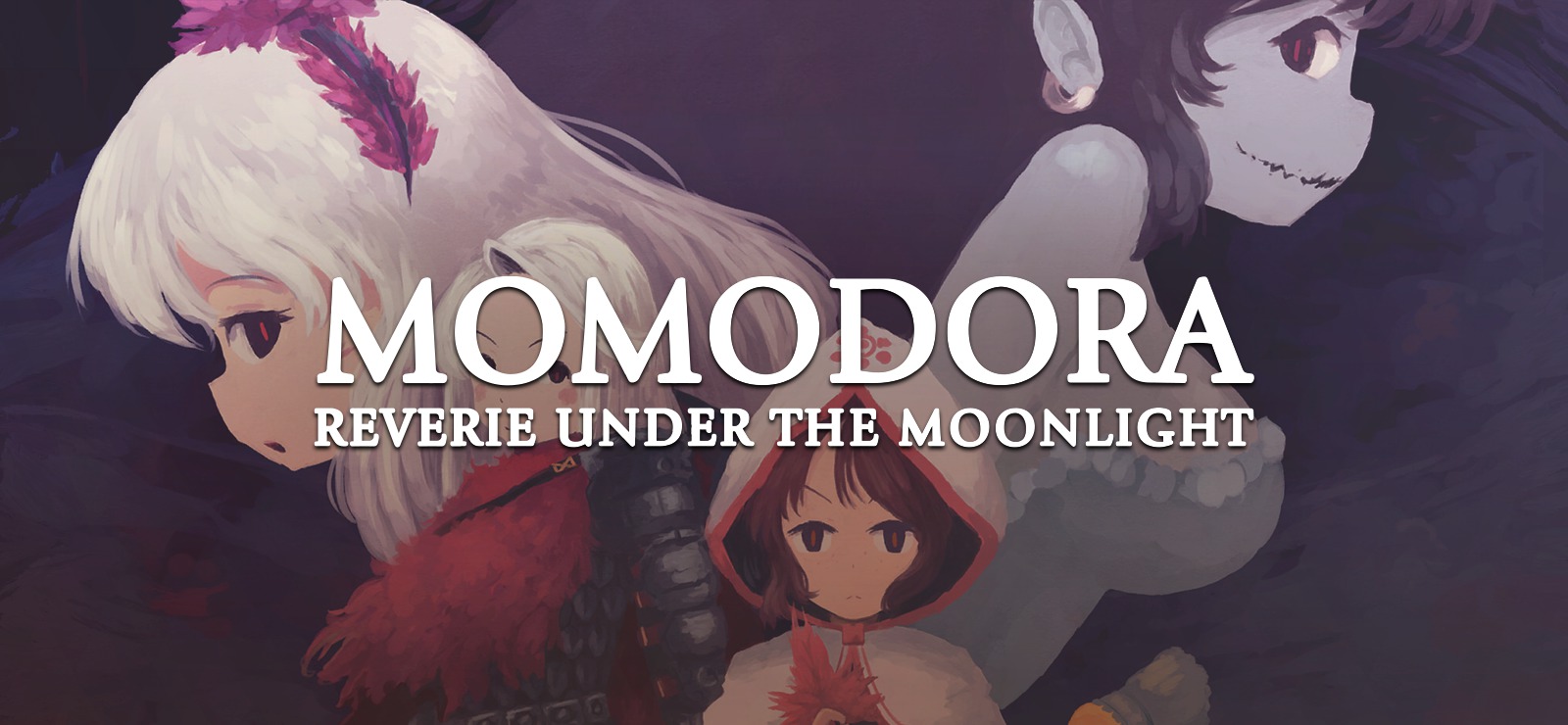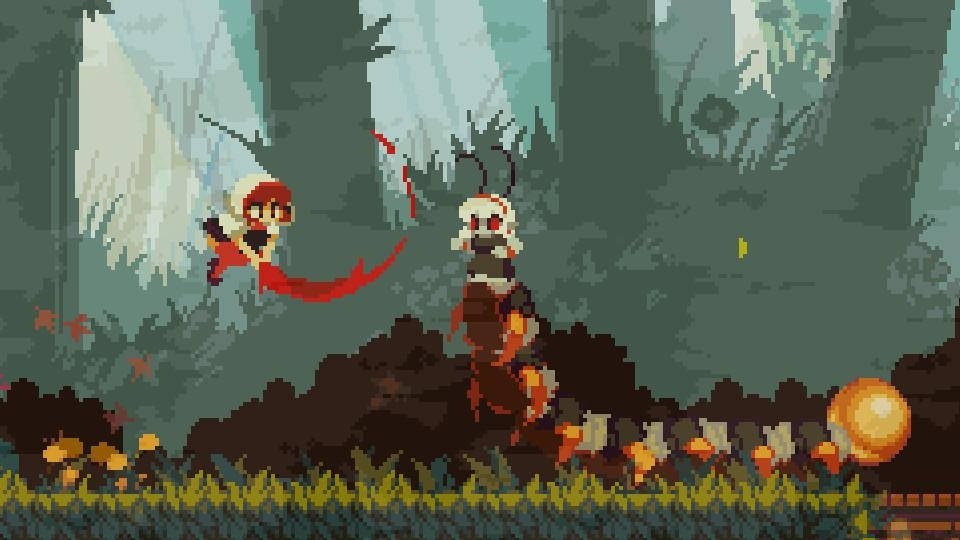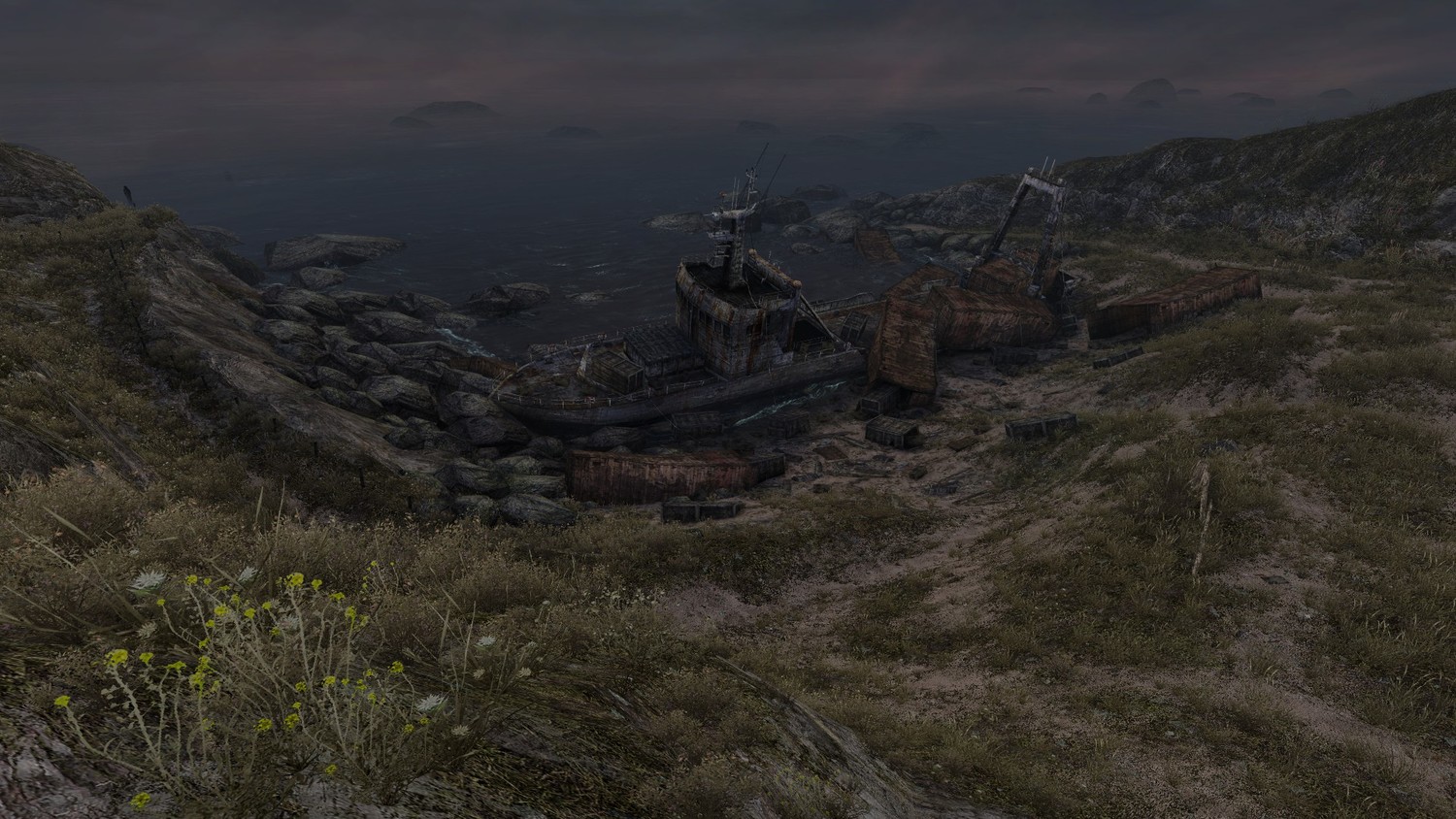
Review: Momodora: Reverie Under the Moonlight
Posted by Curtis H on March 17th, 2017 | 0 Comments | Tags: Momodora: Reverie Under the Moonlight
Around one year ago I discovered Momodora: Reverie Under the Moonlight on Steam and immediately bought it. Why? From the trailer alone, I found myself impressed with just the quality of animation and pulled in by the melancholic feeling presented in the game’s visuals. In playing the game, I found myself falling in love with the game’s combat, presentation, and world structure. It wasn’t doing too much to set itself apart from the wealth of other indie Metroidvanias, but Momodora instead just focused on presenting an incredibly polished, albeit simple, take on an already proven formula. Its release on PS4 this week brought with it an opportunity to check the game out once more and, now that I’ve reached the true ending again, I can confidently say that it’s just as good as I remember.
A young priestess named Kaho, from the village of Lun, has traveled to the kingdom of Karst in hopes of stopping a curse that has spread throughout the land. That’s just about as much story setup as you’ll be given in Momodora. The actual story itself isn’t really attempting to be anything more than a simple setup, something to give context for why Kaho as traveled to Karst. There’s not going to be lengthy cut-scenes, or exposition dumps later in the game to clear up the full picture of what happened. Instead, much of the story and lore within Momodora is left to be discovered on your own. In exploring the world, talking to NPCs, and potentially following through on character quest-lines, you’ll gain a sense of just what happened to Karst and its citizens. For some, certain optional events will stick out as incredibly memorable moments from the journey, while for others, most of the story and bits of lore in-game can be entirely ignored. That said, I’d recommend seeking out everything this game has to offer, it won’t take too long and it’s all very much worth seeing.
Momodora’s progression is essentially what you’ve come to expect from a game of this design. The world is structured in such a way that you’ll typically have a few directions to search at any given time, backtracking to previously unreachable areas with a new ability happens often, and there’s a handful of challenging boss fights that await your arrival. Progression is marked and saved at bells that are positioned at various key locations throughout the world. These bells restore Kaho’s health and replenishes the number of uses for specific items. Near some of these bells is a mysterious NPC that sells both active and passive items. Active items can be used to restore health or momentarily increase attack power, while passive items grant special benefits as long as they’re equipped.

Away from the safety of bells, Karst is a pretty dangerous place. It’s infested with wolves, witches, skeletons, and plenty of other creatures that can easily kill you if you’re not paying attention. Luckily Kaho comes equipped with a bow, an infinite supply of arrows, and a really big leaf. (Yes, a giant leaf, and it’s awesome.) One of the key highlights in Momodora is its responsive controls and this naturally carries into the game’s combat. There’s a kind of rhythm in smacking enemies with a leaf, rolling through oncoming attacks, and dealing out deathblows with a nicely timed charged arrow shot. It feels great switching between weapons on the fly and there’s some really nice audio, visual, and force feedback to make every hit feel really good. Momodora’s combat is incredibly satisfying and made even better when you consider how it’s presented. The screen shake is nice, but it’s the character animation that’s just super impressive. It’s a game that refuses to be held back by its 16-bit artistic influences and presents a level of animation that’ll immediately make you stop and look.
Bosses in the game up the ante and make for some really fantastic and memorable combat encounters. Each boss is challenging, distinct, and they even have a bit of lore connected to them, if you’re willing to search for it. You can also face many of these bosses in whatever order you like, which is something that I’ll always really appreciate.
If I can be vague, it’s very easy to earn the bad or true ending without really knowing what the parameters for each ending are. There’s one specific thing that needs to be done and, unless I missed it, the game doesn’t seem to indicate why that’s the thing that triggers the true end. Ultimately, if you’re thorough, you’ll get the true ending regardless, but I do think that the context for why that specific condition triggers the true end could be better explained. That’s of course a very minor nitpick, but something that did stand out on this playthrough.
Momodora: Reverie Under the Moonlight is an excellent game. Instead of attempting to innovate, the game instead focuses on delivering a polished adventure with satisfying combat, an interesting world to explore, and lore that can naturally be uncovered by the player. There are loads of indie Metroidvanias out there, but Momodora is one that’s absolutely worth your time.
A copy of this game was provided by the publisher for review purposes. For more info on our review policy click here.
General Info
- Developer: Bombservice
- Publisher: Playism
- Platforms: PS4 (Reviewed)
- Release Date: March 2017
- Price: $9.99
- Genre: Action Platformer
Score:
What I Like:
- Striking visuals and animation.
- Excellent combat
- Exploration that's rewarded with new items and lore.
- Responsive controls
What I Dislike:
- Requirement for true ending is vague.




